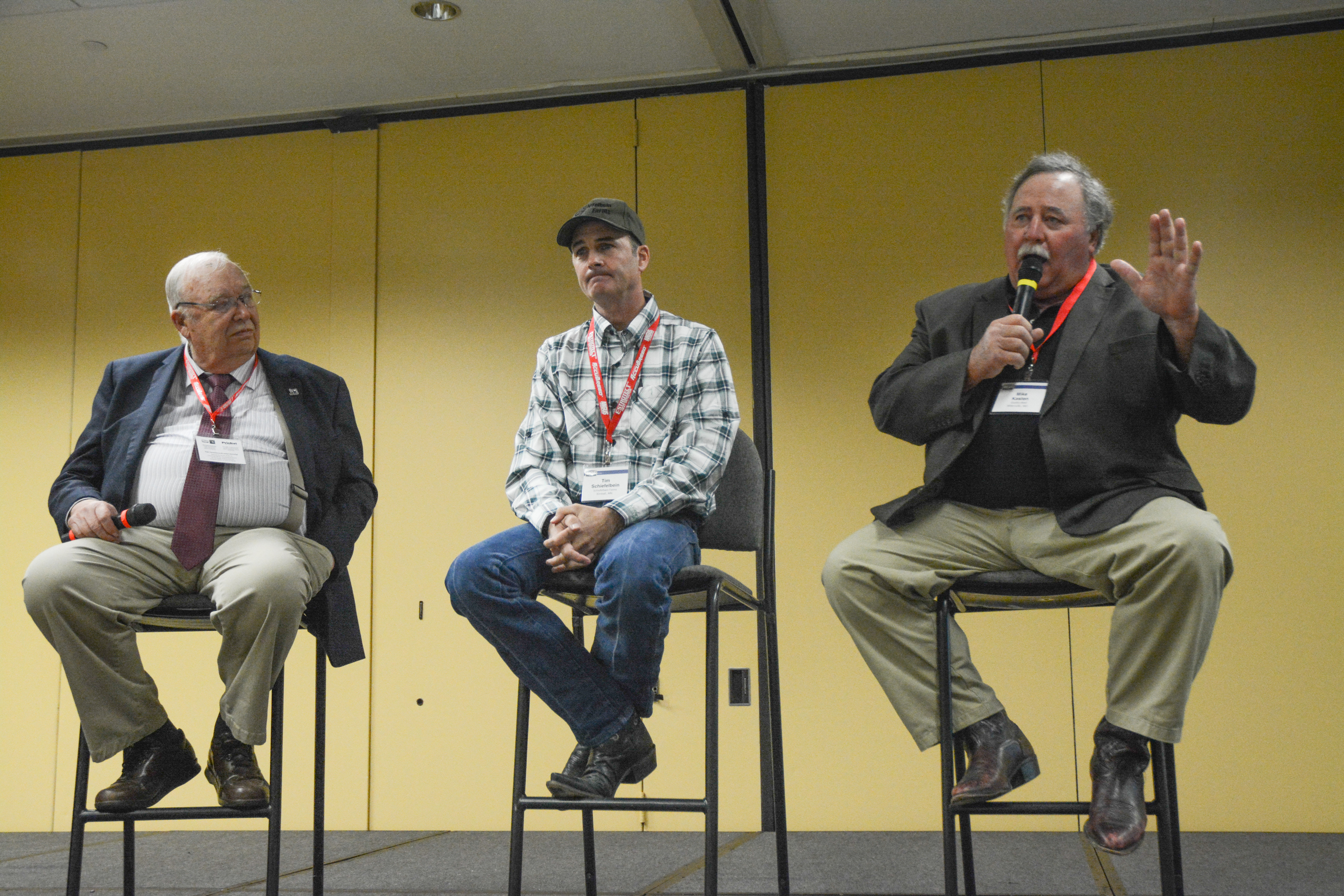
Agricultural News
Seedstock Panel Takes a Buyer's Perspective on How to Best Capture the Value of Good Genetics
Thu, 01 Dec 2016 11:19:54 CST
 Angus bull buyers paid record-high prices in 2015. The calves from those sires are going to market now, and breeders should be helping their customers get the most out of the investment.
Angus bull buyers paid record-high prices in 2015. The calves from those sires are going to market now, and breeders should be helping their customers get the most out of the investment.
That was the message from three panelists at the 2016 Angus Convention in Indianapolis, Ind., Nov. 4-7.
"When I left college in '77, I swore that some day we would get paid for our genetics," said Mike Kasten, a commercial cattleman from Millersville, Mo. "I didn't know it would be the mid-'90s before that actually happened."
Twelve years into his 42-year career, the producer started retaining ownership of his calves through the finishing phase, but the rewards weren't immediate. As value-based marketing developed, the incentive for breeding and managing cattle for high-quality endpoints became more apparent.
"We still see $500 to $600 difference from the most profitable calf to the least profitable," said Kasten, who currently runs the Quality Beef by the Numbers program. His goal is to keep learning about the top performers and the bottom end, and replicate the former. "We can create a lot more value and a lot more dollars on the same resources. It won't cost us a penny more to do that."
About the time Kasten was looking for a grid, Angus breeder Tim Schiefelbein was developing one as cattle buyer for Monfort Inc. (later Swift, and now JBS).
"They wanted a way to pay more for the good cattle and less for the worse cattle," he said. Growing up on his family's Minnesota Angus operation, Schiefelbein recalled asking his dad why they were collecting carcass data: "Because," he said, "one day we're going to get paid for it."
That original formula was introduced in 1996, just two years after he and brother Don Schiefelbein helped the family establish a customer buy-back program.
"There was no way back to the family farm unless you sold more bulls," he said. The answer was expanding sales westward. "Try selling bulls out in western South Dakota from Minnesota, and that's a challenge at 22 years of age," he said.
Schiefelbein said his older brother had the idea: "What we need to do is help these customers at the thing they hate most."
Marketing.
That "you buy, we bid" customer service program is still going strong in Kimball, Minn., where the family helps place about 25,000 cattle on feed each year, owning 20% of them.
"We give the data back to the producers," Schiefelbein said. "We can make improvements, make changes, do all that good stuff and get paid more."
Bridgewater, Iowa, breeder Dave Nichols has a model that looks a bit different. It goes back to his bank board experience during the 1980s Farm Crisis.
"Families that never missed a loan payment had to file for bankruptcy because they were under water. It was one of the really grim things I did in my lifetime and it left some really deep scars," he said.
Nichols sold bulls primarily to customers with small herds, and it became apparent he had to do something to help them stay in business.
"I didn't mind competition with anyone selling bulls, but I couldn't sell bulls if people didn't have cows," Nichols said. "We decided that to keep our customers in business, we had to add value to their feeder calves."
In 1991, the family held their first genetic source auction where weaned, vaccinated, Nichols-sired calves sold in a special sale.
Although a competing auction market advertised in an effort to shake would-be buyers' confidence, the Nichols crew visited customers to be sure calves met the protocols and Nichols himself called on the top 50 feedyards in the United States.
"Those cattle brought $10.80 (per hundredweight) more than the market price at the time," he said.
Having outgrown the one-sale model, Nichols now helps customers by promoting their calves at local auction markets of their choice.
Still, Nichols doesn't agree with "experts" who advise his customers.
"If you don't feed out your own calves, then don't pay any attention to marbling. Don't pay any attention to carcass, because you're selling your calves at weaning and you're not getting paid anything for it," he's heard often enough.
"That's not true," he countered. "I say to our bull buyers, 'Everybody feeds them out, and somebody ends up eating them. By golly, everything is worth weight times the money, and so we breed our cattle as if we were going to retain ownership on them and end up eating them.'
"If any of you think you can make this work, and you aren't selling bulls that will gain and grade and produce Certified Angus Beef, you're going to be in for a big disappointment," Nichols said.
The three cattlemen agreed on many points. Gain, grade and health are the three most important traits for a cattle feeder, they said, and the only way to learn more about the next segment is to live it, at least once.
"If you're a purebred person and you have never feed cattle, you need to feed cattle," Kasten said.
It's important to gain a new perspective and to get more information, Nichols said.
"We're in a position now that the people buying our calves know more about our cattle than we do," he said. "The thing to do is to breed these cattle right and have them as healthy as you can."
Source - Certified Angus Beef
WebReadyTM Powered by WireReady® NSI
Top Agricultural News
More Headlines...





